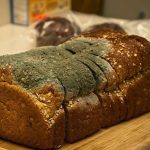 Multi-celled, microscopic organisms which usually reproduce from spores. Often called fungi.
Multi-celled, microscopic organisms which usually reproduce from spores. Often called fungi.
A parasitic fungus that exists in multicellular colonies; the deposit or growth produced by molds. Molds and their spores are the cause of allergies for many people. Molds thrive in damp locations.
A matrix used to fabricate or duplicate a prosthetic device.
A plant, some of which are pathogenic. Examples of diseases caused by a mold are mycosis and ringworm (tinea).
Any multicellular filamentous fungus that commonly forms a rough furry coating on decaying matter.
A fuzzy coating due to growth of a fungus on the surface of decaying vegetable matter or on nonorganic objects.
Enter the realm of culinary creativity with the versatile vessel known as a mold. This hollow dish, available in various shapes, serves as a tool for crafting exquisite desserts and other delightful dishes. Molds can be fashioned from a range of materials, including plastic, metal, glass, or china, each offering its own unique attributes. Typically featuring intricate indentations, these patterns are imprinted onto the food when it is gently turned out of the mold, adding an elegant touch to the final presentation. The process of utilizing a mold involves placing the desired food in its liquid form within the mold, followed by chilling or cooking until it transforms into a solid mass. Embrace the artistry of molding as you experiment with different flavors and textures, creating captivating culinary masterpieces that delight both the eyes and the palate.
